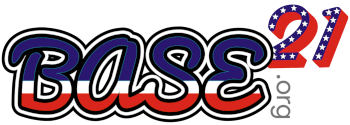- CCTV Setup Guide, Why You ShouldInstall It - February 6, 2024
- Did Fidel Castro Almost Join MLB? - November 28, 2023
- Chastity Belt Myth of the Middle Ages - November 27, 2023
Have you ever marveled at the mesmerizing checkerboard patterns on a baseball field?
Contrary to popular belief, achieving checkerboard patterns on the grass isn’t about coloring or cutting it at varying lengths. The magic lies in the angle at which the grass is bent and how it interacts with sunlight. The grass appears lighter when sunlight reflects off the entire length of the blades. This lighter hue is created when the grass slants away, while a darker hue is perceived when the grass slants toward the viewer, reflecting sunlight only off the tips of the blades.
Creating intricate patterns involves mowing the grass in various directions. For a checkerboard effect, groundskeepers use a method called lawn striping. They start by mowing parallel lines in both north and south directions, then switch to an east-west striped pattern in subsequent passes. This technique alters the angle of light hitting the grass, bringing the desired pattern to life.
Groundskeepers employ traditional reel mowers and strategically place a lawn roller behind the blades to enhance the contrast in their patterns. This technique makes the grass lean more dramatically in the direction of cutting, intensifying the visual impact. Achieving a similar effect at home involves placing weights on the back flap of a hand lawn mower.
Bonus Facts
Analyzing Techniques for Baseball Field Artistry
Creating intricate patterns on baseball fields is an art that demands skill and precision from groundskeepers. Let’s delve into the techniques they master to transform a simple grass field into a visually stunning masterpiece.
1. Strategic Mowing Patterns
The foundation of baseball field artistry lies in strategic mowing patterns. Groundskeepers meticulously plan the direction of each pass, considering factors like sunlight angles and grass growth patterns. This intentional approach ensures that the mowed grass reflects light differently, contributing to the formation of visually captivating designs. Whether it’s parallel lines, circular motifs, or checkerboard patterns, the choice of mowing direction is a crucial element in the groundskeeper’s toolkit.
2. Checkerboard Designs
Among the various patterns, checkerboards stand out as a testament to both precision and creativity. Achieving a perfect checkerboard requires careful planning and execution. Groundskeepers often use specialized mowers with rollers or striping kits to bend the grass in specific directions. The contrasting shades created by alternating rows of bent grass contribute to the iconic checkerboard effect. This technique not only requires technical expertise but also an artistic eye to ensure flawless execution.
3. Grass Bending Techniques
Beyond the mower, groundskeepers utilize additional tools and techniques to bend the grass and create unique designs. Brooms play a crucial role in enhancing details and defining the edges of patterns. Some groundskeepers even employ blasts of water to lay the grass over, adding an extra layer of intricacy to their designs. This combination of traditional tools and innovative techniques showcases the comprehensive skill set required for mastering the art of baseball field landscaping.
4. Nature’s Canvas
Understanding the natural growth patterns of grass is fundamental to effective field artistry. Groundskeepers adapt their techniques to work with the grain of the grass, ensuring that the final result aligns seamlessly with the inherent characteristics of the turf. This harmonious integration of human intervention and nature’s canvas is a key aspect of the art, highlighting the groundskeeper’s ability to collaborate with the environment.
5. Aesthetic Appeal
The overarching goal of these techniques is to elevate the baseball field beyond mere routine maintenance. Skilled groundskeepers view the field as a canvas, using their expertise to create visually appealing landscapes that enhance the overall aesthetic of the ballpark. This approach not only requires technical proficiency but also a deep appreciation for the visual impact of the patterns on players and spectators alike.
Tools and Techniques in Grass Design
While brooms play a pivotal role in enhancing the details of grass patterns, the toolkit of a skilled groundskeeper extends far beyond this fundamental tool. Exploring the diverse array of tools and techniques employed sheds light on the nuanced approach to achieving intricate designs. Groundskeepers, akin to artists with a varied palette, utilize blasts of water to lay the grass over, adding an extra layer of complexity to their creations.
The choice of equipment, including specialized mowers with rollers or striping kits, is a crucial aspect of the process. The application of water, an innovative technique in itself, further contributes to the dynamic nature of the designs. This exploration underscores the fact that creating these patterns is not a one-size-fits-all process; it’s a dynamic and creative endeavor where groundskeepers leverage a range of methods to bring their artistic visions to life on the expansive canvas of a baseball field. The synergy of traditional tools and innovative techniques is a testament to the depth of expertise required to master the craft of grass design.
Lawn Striping
The captivating patterns that adorn baseball fields are not the result of random chance but rather the deliberate and skillful technique of lawn striping. This meticulous process is the foundation of creating visually stunning designs on the grass. Groundskeepers, armed with precision mowers, navigate the field in side-by-side rows, strategically altering their direction with each pass. Similar to the meticulous steps in crafting a checkerboard, the process involves first mowing in a north-to-south orientation, followed by complementary east-to-west stripes. Each pass contributes to the mesmerizing visual effect, and delving into the art of lawn striping unveils the secrets behind achieving these intricate patterns that grace Major League Baseball stadiums.
Maintaining the grass at a height of four or five inches is crucial for achieving the desired effect. The grass should be thick and healthy to enhance the checkerboard illusion. The post-mowing outcome depends on the grass type; warm-season grasses like Bermuda and Zoysia offer subtle differences, while fescue, bluegrass, and ryegrass provide a higher contrast for a more striking effect. Mowing right before watering can further accentuate the design.

